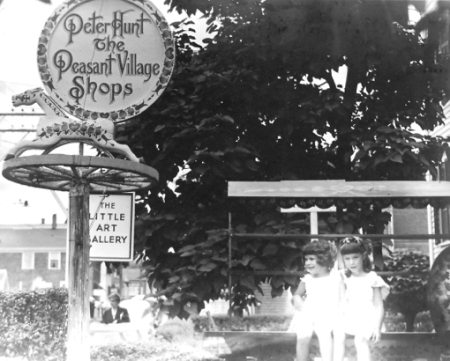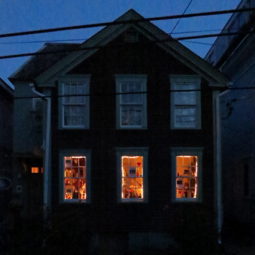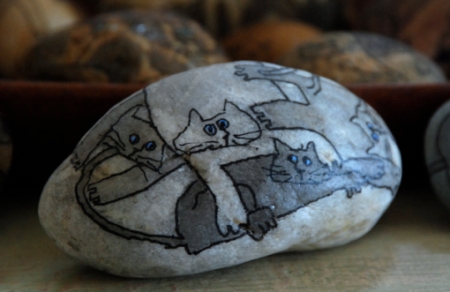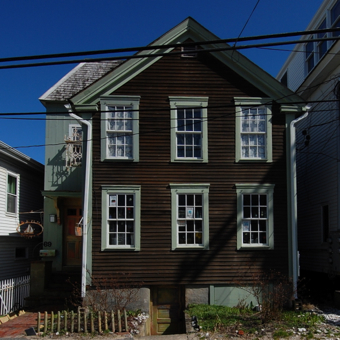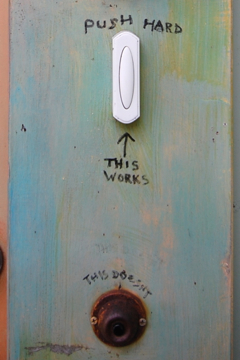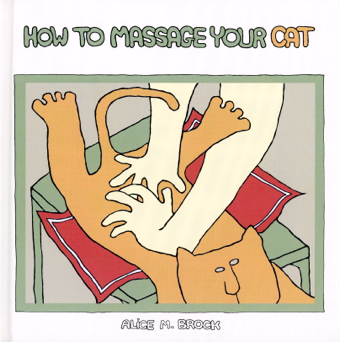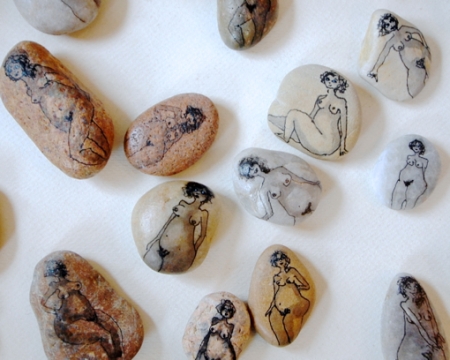You want to feel old?
Well, sort of. The song was released on the album of the same name in September, 1967. The events that the song commemorates actually occurred two years before that, on Thanksgiving, 1965.
But, nevertheless, if you are of a certain age, nothing says Thanksgiving more than “Alice’s Restaurant.”
For those of you who don’t know what I am talking about, here is a Cliff’s Notes version.
“Alice’s Restaurant” consists of Arlo Guthrie delivering a long, guitar-accompanied monologue (a talking blues, really — an art form that his father, the iconic American folk singer,
Woody Guthrie, had perfected) about his arrest for littering in Stockbridge, Massachusetts, by the Stockbridge chief of police,
William Obanhein, a.k.a. Officer Obie.
At the time, Arlo was living with Alice and Ray Brock in a deconsecrated church in Great Barrington, Massachusetts (more about that later).
Ultimately, as the song’s second part tells us, Arlo’s arrest record was at least partially responsible for preventing him from being drafted and serving in the war in Vietnam.
Two years later, the
movie “Alice’s Restaurant” was released. It stars Arlo as himself.
Jewish geography lesson: For many years, I spent summers in the Berkshire mountains of western Massachusetts, where the song takes place. For me, and for so many, the Berkshires are a magical place — the only place where I ever truly relax.
The discerning tourist can find all of the places mentioned in the song (with the exception of the scenes at the draft board, which take place on Whitehall Street in New York City).
- In Stockbridge, you can visit the original location of Alice’s restaurant; it is, in fact, “around the back, just a half a mile from the railroad track” off Main Street.
- For many summers, I used to dump our trash at the Stockbridge town dump, which is probably where Arlo should have dumped his trash in the first place. I could do that, legally, because I had a sticker from the “master garbologist.”
- Officer Obie’s extended family still lives in the area; he was a well-known and beloved figure.
As for the church, it is still there, as well. It serves as the
Guthrie Center, a wonderful concert venue, and home to the Guthrie Foundation, a permanent memorial to the legacy of Arlo’s late parents.
(Check out this
song about Woody’s legacy, written and sung by my friend, Doug Mishkin).
Which brings me to the Jewish stuff.
Fun fact: when Arlo celebrated becoming bar mitzvah, at the Howard Beach Jewish center in Queens, the presiding rabbi was none other than
Meir Kahane.
Kahane would go on to become the leader of the Jewish Defense League, and then, in Israel, of the extreme right wing, anti-Arab Kach party.
Kahane was
assassinated in 1990 by El Sayyid Nosair, who was linked to Osama bin Laden — thus becoming the first American victim of Al Qaida.
Arlo Guthrie and Meir Kahane — together. Think of it.
Back to Woody Guthrie.
Guthrie was not Jewish, and yet, he wrote a bunch of
Hanukkah songs. This
one is one of my favorites.
Guthrie’s guitar was adorned by a simple message, placed there in 1941: “This machine kills fascists.”
As we prepared to enter World War Two, it was the right message.
And, while we are not fighting foreign wars against fascists right now, the anti-fascism sentiment still stands.
One last thing about Woody Guthrie.
When Guthrie lived in Brooklyn, he lived at the Beach Haven apartments, which was a property that had been developed by
Fred Trump — as in the father of the current president.
As others have noted, the older Trump was not particularly interested in having blacks rent his properties.
Which would lead Woody Guthrie to write a
song about Fred Trump:
I suppose Old Man Trump knows
Just how much racial hate
he stirred up in the bloodpot of human hearts
When he drawed that color line
Here at his eighteen hundred family project.
The spirit of protest, birthed by Woody Guthrie and sustained by Arlo, is still alive in our time.
And for this, we surely must give thanks.
SOURCE
Woody Guthrie's Hanukkah Songs
Joshua Eli Plaut
 Here is a recent American tale of old wine in new vessels. Part of our national folklore reveals that Woody Guthrie, the iconic American folk troubadour and songwriter, composed Hanukkah songs. In a 2003 concert, the Klezmatics, a popular Grammy Award-winning Klezmer band, performed Hanukkah songs showcasing lyrics written from 1949 through the early 1950s by Woody Guthrie. The lyrics had laid fallow and long-forgotten in Guthrie’s archives until their discovery in 1998 by Woody’s daughter, Nora Guthrie. Nora asked the Klezmatics to write original music for the lyrics, which fuses strains of Klezmer music with American folk and bluegrass. The 2006 album, “Woody Guthrie’s Happy Joyous Hanuka,” comprises many different songs, including “Happy, Joyous Hanuka” and “Hanuka Tree.” Two of the eight songs, “The Many And The Few” and “Hanuka Dance,” had lyrics and melodies penned entirely by Guthrie. The songs were in part biographical. Woody was married to Marjorie Mazia, a Jewish dancer with the Martha Graham Dance Company who was the daughter of Aliza Greenblatt, an activist and Yiddish poet. Nora remembers “For Hanukkah actually, we had a hat—we didn’t get presents—but we had a hat with different amounts of Hanukkah gelt, and every night we’d pick out five cents or twenty-five cents of gelt. My mother played piano, and we used to sing and dance every night.”*
Here is a recent American tale of old wine in new vessels. Part of our national folklore reveals that Woody Guthrie, the iconic American folk troubadour and songwriter, composed Hanukkah songs. In a 2003 concert, the Klezmatics, a popular Grammy Award-winning Klezmer band, performed Hanukkah songs showcasing lyrics written from 1949 through the early 1950s by Woody Guthrie. The lyrics had laid fallow and long-forgotten in Guthrie’s archives until their discovery in 1998 by Woody’s daughter, Nora Guthrie. Nora asked the Klezmatics to write original music for the lyrics, which fuses strains of Klezmer music with American folk and bluegrass. The 2006 album, “Woody Guthrie’s Happy Joyous Hanuka,” comprises many different songs, including “Happy, Joyous Hanuka” and “Hanuka Tree.” Two of the eight songs, “The Many And The Few” and “Hanuka Dance,” had lyrics and melodies penned entirely by Guthrie. The songs were in part biographical. Woody was married to Marjorie Mazia, a Jewish dancer with the Martha Graham Dance Company who was the daughter of Aliza Greenblatt, an activist and Yiddish poet. Nora remembers “For Hanukkah actually, we had a hat—we didn’t get presents—but we had a hat with different amounts of Hanukkah gelt, and every night we’d pick out five cents or twenty-five cents of gelt. My mother played piano, and we used to sing and dance every night.”*
At the 2003 debut concert with the Klezmatics at the 92
nd Street Y in Manhattan, folk legend Arlo Guthrie, Woody’s son and Nora’s brother, joked that as children they would dance “around the Hanukkah tree.” "Happy Joyous Hanuka" counts down each candle on the menorah (“Seven for the sons of Hannah that died/Six for kings and the tricks they tried/Five for the brothers Maccabee”), while “Hanuka Tree” has a lively simple melody (“Round and around my Hanukah tree/Round and around I go/Round and around my Hanukah tree/Because I love you so”). According to Nora, most of Woody Guthrie’s Hanukkah songs seem to

have been written in November or December within five days of each other “because he had bookings in December for children’s Hanukkah parties in assorted Brooklyn community centers.” As was his wont, Woody would “write songs only for the gig a few days before and then go on to other songs for other gigs.” For the Guthrie family, a family of improvisers not of traditions and for whom the approach to religion was “all or none,” the tree was a “Christmas tree, a Hanukkah tree, and a holiday tree. It was a fluid thing!”
Indeed, the popularization of Woody Gutherie's Hanukkah songs by the Klezmatics demonstrates the vital role that music plays as an intrinsic cultural force contributing to the Americanization of this Jewish holiday, as it coexists with Christmas.
*Telephone interview with Nora Guthrie, August 17, 2011.
Aliza Greenblatt (Yiddish: עליזה גרינבלאַט, September 8, 1888 – September 21, 1975) was an American Yiddish poet. Many of her poems, which were widely published in the Yiddish press, were also set to music and recorded by composers including Abraham Ellstein and Solomon Golub and were recorded by Theodore Bikel and Sidor Belarsky, among others.
Her daughter Marjorie, a dancer in the Martha Graham Dance Company, was for a time married to folk musician Woody Guthrie. Greenblatt was the grandmother of folk musician Arlo Guthrie
 by Jeannette de Beauvoir
by Jeannette de Beauvoir
Alice Brock is no washashore. “I was conceived on Long Point,” she says, smiling. “Oh, wait, you don’t want to start that far back?”
It doesn’t matter how far back you begin in Alice Brock’s life; it’s all interesting, as attendees at the Heritage Day that will be celebrated in her honor at the Provincetown Public Library on June 13 will get a chance to hear.
Maybe it started out on Long Point. Or maybe it started during the summers her father worked for Peter Hunt and the family lived on Commercial Street—“the best summers of my life,” says Brock. She decided then that she wanted to live in Provincetown forever.
There were a couple of rather famous detours on her way back here, however. Brock got married and headed out to Stockbridge to teach at a prep school run by a left-leaning scholar whose assumption was that everyone—faculty, staff, and students—were equals. “It was the mid-sixties,” Brock remembers. “My husband played the guitar, kids would come and hang out at our house on campus all the time. We were bohemians…or maybe beatniks.”
One of the kids who played and sang with Brock and her husband was Arlo Guthrie.
Brock’s mother bought the couple a church as a wedding present; her husband, an architect and sculptor, turned it into living quarters. It was a magical place, complete with bell tower and an arch made by New Bedford shipbuilders who simply reversed their usual approach to curves and space. Parents trusted Brock and her husband, as they were teachers, and more and more kids came to stay, to play, to talk. “But there I was, cooking for all those voracious teenagers!” says Brock. “That had to stop.”
Her mother found the solution: “She said, ‘there’s a diner in Stockbridge that’s for rent. I’ll help you, and you can get paid for your cooking.’” Brock smiles. “I always leap before I look, so I said, why not?”
That leap eventually brought about her extraordinarily popular cookbook, Alice’s Restaurant Cookbook, not to mention a song that became an anthem for the age, Arlo Guthrie’s anti-war hymn, Alice’s Restaurant. It was a golden time. “I loved it; it was all a lot of fun. Arlo’d been called up for the draft and that’s when he came up with the song…We were just all these hippies against the war. We lived as if the world was the way we wanted it to be.” She pauses. “That’s the way we still live.”
It was time to go to Provincetown. “I’m very lucky, because I don’t care about money,” says Brock. “When I run out of money, some more comes in, somehow. I spend the money on other people, and as it goes out it makes room for more to come in.”
Although she never took an art class, Brock had always been making things. “I love to recycle objects,” she says. “I even used to carve little figures out of sticks of chalk. I made a movie out of a roll of adding-machine tape, with narration. I always felt I was an artist, but I never saw it as a way to make money, it was all very personal. Before moving here, I had one art show in the Berkshires. Everything got sold—and I felt completely bereft! Then I came to Provincetown and I was part of a fall arts festival. I hung things for the first time—for the first time, I had a gallery. And I loved having a gallery!” She had that gallery for the next forty years. “I always enjoyed talking with all the people who came in…you have to understand, the sixties, it was a wonderful time for most people, and they love going back to that time. And so I sold art!”
And she has continued to sell art. Her stones, adorned with pictures of women and of cats, can be found literally all over the world. While she no longer has a gallery on Commercial Street—“this is the first time that I don’t have a view of the water”—this summer on weekends she’ll be in one of the art shacks on MacMillan Pier, where everyone will have the opportunity to take home an Alice Brock painting, stone, or book.
Though she now has emphysema and requires oxygen, Alice Brock is still creating, and still in love with the place where she was conceived. “I love Provincetown with all my heart,” she says. “Every day I feel blessed to be here.”
Alice Brock will be the guest of honor at this year’s Provincetown Heritage Day celebration at the Provincetown Public Library, 356 Commercial St., on Tuesday, June 13 at 6 p.m. The event will feature a Q&A with Brock and is free and open to the public. For more information call 508.487.7094 or visit provincetownlibrary.org.












